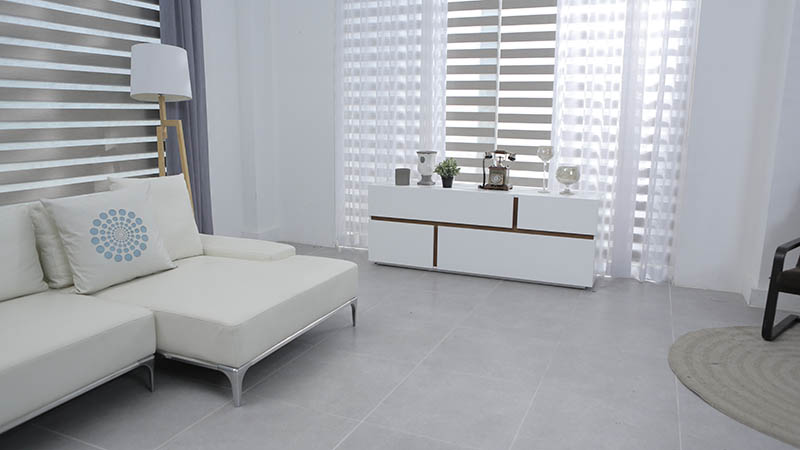
Whether you own a home or have a business, tile flooring is a popular floor option. Tiles give you that clean, smooth look. But if you have had the tiles for a while, you are probably all too familiar with how slippery they can become especially when wet. Then you need a non-slip solution for your family and guests, especially elderly folk. Truth be told, unexpected falls are the primary cause of unintentional injury resulting in death among the elderly.
On the upside, there is a whole range of ways to make your tiles less slippery without the hefty price tag. Read on as we walk you through simple solutions for keeping your floors safe and non-slip.
Solutions for keeping your floors safe and non-slip
Non-slip tape
Non-slip tape comes in several different colours, shapes and sizes and is perfect for tiled decks, steps, bathrooms and kitchens. With varying degrees of friction, the tape is easy to install and can be used in wet and dry areas.
Be aware that in wet areas exposed to water, oils and detergent, you may need to reapply the tape more frequently. You will also need to apply the non-slip tape onto the tile and not across the grout. Otherwise, dirt will build up between the tile and grout and the tape will peel.
While non-slip tape is reasonably cheap and fail-safe in creating friction, it comes with its downsides. They are not invisible and if not installed correctly, air and dirt can get trapped underneath causing unsightly bubbles. That’s why it is important to remove all specks of dirt before laying the tape down.
Non-Slip Foam flooring
The foam floor is perfect for gyms, workshops and playrooms. It can be installed in no time and is reasonably inexpensive. It normally fits together like a puzzle with interlocking slots so that it doesn’t move or slide around.
Adding instant traction, foam flooring is easy to clean, moisture-resistant and durable. The foam is available in varying degrees of sizes, thickness and colours. You might be lucky to find foam floors that match your home’s interior.
The disadvantage of foam flooring is that dirt and crumbs can get stuck between the cracks. You can conquer this by pulling the foam up frequently and cleaning the underneath tiles.
Plus, foam flooring will always look like what it is – foam flooring. It will change the appearance of your room once installed and is not ideal for entertaining areas such as the dining or living room.
Rugs and carpet runners
Probably the easiest and quickest way of tackling slippery tiles is to place rugs or carpet runners over them. Available in many different design choices, rugs and carpet runners are ideal near the sink, entryway, hallway, stairs and large open rooms. They satisfy any budget and are easy to clean.
The drawback is that loose rugs can eventually endure curled edges which can be a tripping hazard. Non-slip backing, double-sided tape or plastic matting on the under-side of the rug can help increase the traction and prevent the material from slipping on your tiles.
If you’re into DIY, you could use a hot glue gun on the underneath surface of the rug to draw criss-cross lines. Leave it to dry and it will act as an anti-slip tile solution.
There is also the downside of rugs and carpet runners having limited coverage. Covering your entire tiled areas in rugs or carpet runners defeats the purpose of having tiles in the first instance. But by placing them in high traffic and areas prone to slipperiness you will decrease the likelihood of slips and falls.
Safety mats for showers and bathtubs
Shower floors and bathtubs are usually very slippery. Safety mats can give you an inexpensive and easy solution and prevent slips and falls. But it is important that you place them on clean and smooth surfaces, otherwise the suction cups won’t attach well to the surface and the mat may slip.
Safety mats come in different colours and sizes so you can choose mats that best fit and suit your bath and shower.
Non-slip tiles
Replacing your entire floor with non-slip tiles would be the most expensive and labour-intensive solution, but it can preserve the appearance of your décor without the outcome of slipperiness.
Unless you are prepared to renovate your home or start a construction project, this might not be the method for you.
Non-slip tile solution
Anti-slip tile treatment might just be the preferred solution. Without changing the appearance of your tiles and décor, and without needing to replace your tiles, anti-slip tile treatment can be applied to most tiles in bathrooms, laundries, showers and other slippery floor surfaces.
Slip Drs Sydney leads when it comes to anti-slip tile treatment. Our solution works by micro-etching the slippery surface of tiles while creating a pattern that disperses and directs water from underfoot.
Non-slip treatment has so many benefits.
- It is suitable for all floors inside the home and out in the backyard.
- It is a simple and quick application with no odour or mess.
- The treated tiles will remain non-slip even when wet.
- You can walk on your floors almost immediately after application.
- It doesn’t change the appearance of your tiles’ surface.
- Slip Drs Sydney’s anti-slip treatments are proven to meet Australian slip standards.
- Our products exceed the Australian Standards AS4586:2013 slip resistance classification requirements of new pedestrian surface material and the National Construction Code.
In a few words
All of these methods are effective when it comes to decreasing the slipperiness of your tiled floors. Most solutions will alter the appearance of your décor, especially when misapplied, but they can be reversed.
In the long run, the most ideal and inexpensive solution is anti-slip treatment. It is well worth the money and effort invested as it will solve the issue of slipperiness for many years to come.
Slip Doctors Sydney is the best solution for making your tiles non-slip and you and your guests safe from falling or slipping.
Related Posts:

